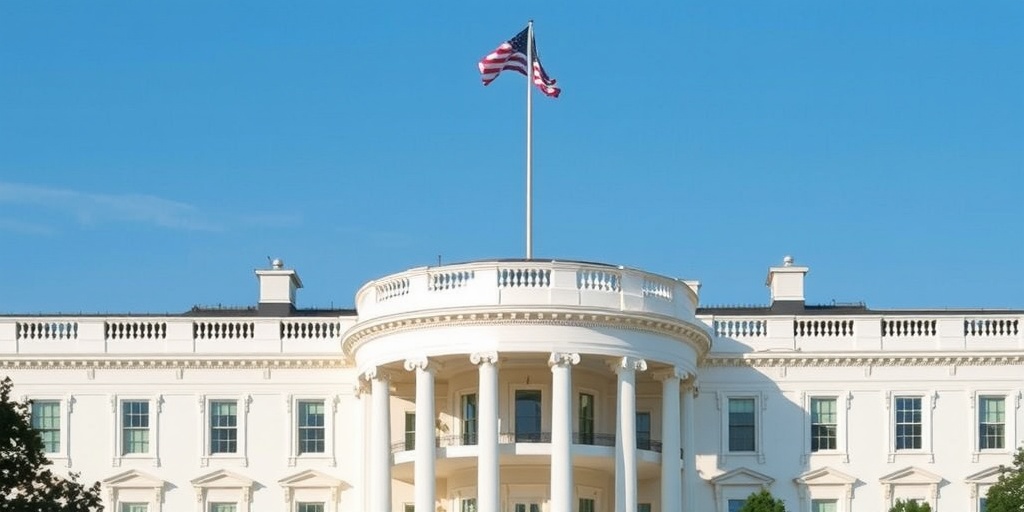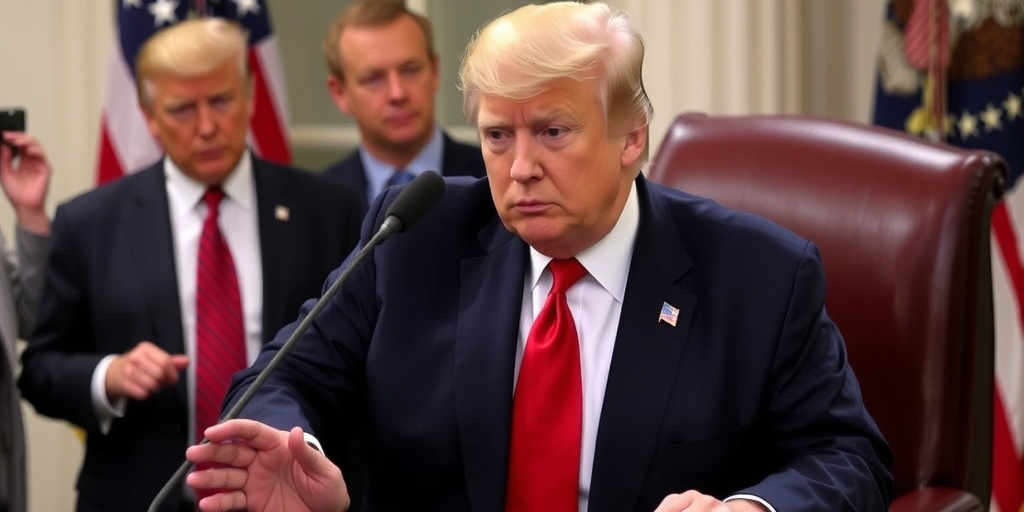Now Reading: Trump’s Plan Includes Office Closures and Major Layoffs
-
01
Trump’s Plan Includes Office Closures and Major Layoffs
Trump’s Plan Includes Office Closures and Major Layoffs

Title: Trump Administration Sets Aggressive Agenda for Federal Workforce Cuts
The Trump administration is embarking on its boldest initiative yet to shake up the federal bureaucracy, demanding significant workforce reductions from government agencies, which may involve closing offices and relocating staff away from the Washington D.C. area. This sweeping directive requires agencies to outline specific plans for consolidating or eliminating divisions by March 13, as detailed in a recent memo from the Office of Personnel Management (OPM) and the Office of Management and Budget (OMB). This initiative is part of a larger “reduction in force” (RIF) strategy mandated by President Trump and heavily influenced by billionaire Elon Musk, who has become a key advisor in the effort.
According to the memo, agencies must submit new organizational charts along with proposals for relocating offices by April 14. These relocations are intended to move operations to regions with a lower cost of living, with agencies expected to implement these changes by the end of September. Experts, however, warn that fulfilling these requirements legally and effectively within such tight timelines may be impossible.
“No agency can genuinely create a detailed strategic plan in a matter of two weeks,” commented Donald F. Kettl, a professor emeritus and former dean of the University of Maryland’s School of Public Policy. “They need time to determine their priorities and how best to execute them before making sweeping cuts.”
The federal government must adhere to specific rules when implementing these workforce reductions. Employees are entitled to a notice period of at least 60 days, although recent White House guidelines permit agencies to request waivers to shorten this period to 30 days. Additionally, affected divisions are required to establish an RIF registry that ranks employees based on factors like service duration, performance ratings, and veteran status. This process aims to prioritize retaining highly qualified employees amid job cuts.
President Trump previously outlined the aggressive timeline for downsizing the federal workforce in an executive order earlier this month, resulting in thousands of job losses primarily among probationary employees and those in roles associated with diversity, equity, and inclusion initiatives, which have since been scrapped by the administration.
No previous administration has attempted to scale back the federal workforce to such an extent in so short a timeframe, leaving federal employees in a state of confusion and apprehension. “There’s a constant feeling of dread as we open our emails,” expressed one nurse at a Veterans Affairs hospital, noting that uncertainty permeates daily operations. Her colleagues question whether they should seek alternative employment as the veterans they serve ask if their hospital will close.
Another employee, who works at the Federal Deposit Insurance Corporation (FDIC) and is the sole provider for her family, conveyed her anxiety about the future of her job and health insurance. She perceives the administration’s approach as one that inflicts trauma among workers. In a particularly chaotic turn of events, Alma Aliaj, a former employee at the U.S. Agency for International Development, recounted the bewildering experience of being notified multiple times about her employment status, highlighting the administration’s haphazard management of federal hiring practices.
“The amount of chaos and lack of thought cannot be overstated,” Aliaj noted. Prior to the new RIF guidance issued on Wednesday, some agencies had already begun disseminating their workforce reduction plans, while others started evaluating the closure of offices and termination of leases.
The newly appointed F.B.I. Director, Kash Patel, announced plans to transfer about 1,000 agents from the Washington area to various parts of the country, alongside another 500 support staff members who will relocate to an F.B.I. campus in Huntsville, Alabama. Labor unions representing federal employees have strongly contested these actions, asserting that the Trump administration isn’t adhering to established rules for reductions in force. Reports emerged that the Department of Housing and Urban Development (HUD) informed workers of impending cuts impacting 144 positions, primarily from the Office of Field Policy and Management, without following necessary contractual or statutory requirements.
“HUD has followed almost none of the rules for a RIF,” protested Ashaki Robinson, a regional president for the Washington local chapter of the American Federation of Government Employees. “They simply provided us with a list of names and the offices where they work, citing the executive order as justification for the cuts.”
In contrast to the turmoil within the federal workforce, President Trump remains confident about the efficiency initiative, remarking during a recent cabinet meeting, “We have cut billions and billions and billions of dollars. We’re looking to get it maybe to a trillion dollars.” However, these claims lack substantiation. The efforts led by Musk’s team at the so-called Department of Government Efficiency, aimed at slashing various programs and contracts, have been marked by a lack of transparency. Concerns have been raised regarding hasty contract terminations, which have jeopardized crucial programs, including essential funding necessary to combat Ebola outbreaks—an error that Musk himself has admitted.
As the Trump administration pushes forward with its aggressive cuts and reorganizations, the implications for federal employees and the essential services they provide remain uncertain, leaving many to contemplate their future in a potentially reshaped government landscape.
Stay Informed With the Latest & Most Important News
Previous Post
Next Post
-
 01New technology breakthrough has everyone talking right now
01New technology breakthrough has everyone talking right now -
 02Unbelievable life hack everyone needs to try today
02Unbelievable life hack everyone needs to try today -
 03Fascinating discovery found buried deep beneath the ocean
03Fascinating discovery found buried deep beneath the ocean -
 04Man invents genius device that solves everyday problems
04Man invents genius device that solves everyday problems -
 05Shocking discovery that changes what we know forever
05Shocking discovery that changes what we know forever -
 06Internet goes wild over celebrity’s unexpected fashion choice
06Internet goes wild over celebrity’s unexpected fashion choice -
 07Rare animal sighting stuns scientists and wildlife lovers
07Rare animal sighting stuns scientists and wildlife lovers




















